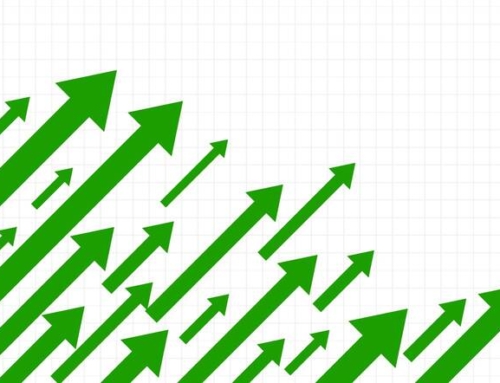What is the difference between investing and trading?
In the equity market, there are basically two different mechanisms to make profit, namely trading and investing. These names are often incorrectly used interchangeably assuming that investors and traders are the same. But, in reality the two are not similar.
What is Investing?
Investing money is an effective tool to create a financial asset which grows with time. The wealth created can be used for a variety of objectives such as meeting shortages in income, saving up for retirement, or fulfilling certain specific obligations such as repayment of loans, payment of tuition fees, or purchase of other assets. The investment could be in gold, property or stocks, other financial instruments, etc.
Traditionally, investing in stock market is related to buying stocks or other financial instruments that are expected to fetch returns over a long period of time (5,10,15 years or more). So, the investor should be mentally prepared for a longer time duration to make a significant return on his or her investment. Thus, investing involves intense fundamental research before selecting various stocks for investing. The aim should be to create a balanced portfolio of different stocks and bonds that give returns through increase in value, dividends or interest income there by helping the investor to attain financial security. As a result, investors do not sell their holdings regularly. It is only in case of an emergency or when the stock has met its long-term targets that they liquidate the stocks in their portfolio.
What is Trading?
Trading is characteristically associated with buying and selling stocks, commodities, currencies, bonds or other financial instruments over shorter periods. This is primarily to make profits from the short-term movements in prices of these securities. So, traders essentially take advantage of market volatility. Assessing good trading opportunities typically makes use of trading systems or chart-based techniques to detect short-term patterns in prices. This is called technical analysis. It involves more frequent buying and selling of stocks or other financial instruments.
Investing vs Trading Differences
The main difference between trading and investing is that the former provides an opportunity to realize profits from volatile trends in the market.
In investing, short-term gains and losses are ignored for long-term gains, which are achieved as the company grows. A trader will concentrate on the perceived market value of the stock. He or she would not be interested in the financial health of the underlying company. An investor though, would be thoroughly interested in the company’s financial performance more than the trends in the stock.
Trading requires holding on to a stock or financial instrument for a day or until it hits a short-term target. Investing involves holding onto a stock for a longer duration.
Trading involves selling off the stock/financial instrument as soon as it hits the target price or crosses the loss threshold (also called the stop-loss price). Investing involves ridding out the downtrends of the market and not to sell unless required.
Hope this helps in your investing/trading journey. All the best.
 What is it?
What is it?
Under the peak margin rule imposed by SEBI, traders are required to give 100 percent margin upfront for their trades. This, experts feel, will severely impact intraday trades. It may also be noted that Sebi introduced new margin rules a year ago for day traders.
Under the new peak margin norms, stockbrokers are required to collect minimum margins on leverage-based trade upfront, compared to the earlier practice of collecting it at the end of the day.
Sebi had decided to introduce the peak margin norms last year in order to curb speculative trading and restrict leverages offered by stockbrokers to their clients.
After the new norms were announced, stockbrokers stopped using end-of-day positions to calculate margin requirements and shifted to using intraday peak positions from December 2020.
Under these new norms, Clearing Corporations will seek minimum margin throughout the session and force brokers to collect additional margin from clients if they fall short. Stockbrokers who fail to do so will face a penalty.
As a risk mitigation measure, additional leverage will also be restricted and stockbrokers will be penalised if leverage offered to clients exceed VaR + ELM and standardised portfolio analysis risk for derivatives positions.
Stockbrokers will also face a penalty if margins collected from traders is less than 100 per cent of trade value in the case of cash market stocks and an additional Span + Exposure for derivatives trade.
SPAN Margin is the minimum requisite margins blocked for futures and option writing positions as per the exchange’s mandate.
The ‘Exposure Margin’ is the margin blocked over and above the SPAN to cushion for any MTM (Marked-to-market) losses.
Both the SPAN and Exposure margins are specified by the exchange. So at the time of initiating a futures trade, the client has to adhere to the initial margin requirement. The entire initial margin (SPAN + Exposure) is blocked by the exchange.
As per the new peak margin norms, the margin requirements will be calculated 4 times during every trading session. It will also include intraday trading positions.
Traders will now have to park more cash towards fulfilling margin requirements for trade. In fact, trading in futures and options (F&O) will also become more expensive.
Earlier, stockbrokers’ association ANMI had termed the market regulator’s new peak margin rule as unfair and it had even urged Sebi to reconsider its peak margin norms, especially related to intra-day trading.
Traders too are dejected with the new rule as they will have to cough up more money to bet in the stock market, especially for intraday and futures trades. Further, traders will also have to pay a penalty if the peak margin norms are not followed during a trading session.
Zerodha has a page on their website to find out the SPAN & Exposure margin required for a futures position or short option.
As per SEBI regulations, margin shortfall penalty is levied on trades performed without sufficient margin (SPAN & Exposure for F&O and VAR+ELM+Adhoc for equity), net buy premium, physical delivery margins and marked to market losses (if applicable) as prescribed by the exchange.
The charges imposed are given below.
| Short collection for each client | Penalty percentage |
| (< Rs 1 lakh) And (< 10% of applicable margin) | 0.5% |
| (= Rs 1 lakh) Or (= 10% of applicable margin) | 1.0% |
To understand why a penalty is levied, we will have to first understand about the Settlement cycle and the concept of Margin reporting in India.
The settlement cycle in India for Equities is T+2 and for F&Os, it is T+1. When you sell Equities and receive money as sale proceeds, such sale proceeds can be withdrawn only on T+2 day.
If you sold stocks worth Rs.1,00,000 on Monday, you would be able to withdraw these funds only on Wednesday. Monday would be taken as T-Day, Tuesday would be T+1 Day and Wednesday would be T+2 Day). Similarly when you sell F&O positions you would be able to withdraw these funds on T+1 day only.
The thing to be noted here is that when you sell an Equity position or an F&O position, only on the respective settlement day the funds become yours and you can use them. From the time you sell till the time it is settled, they would be considered as “Encumbered funds”.
Margin Reporting: When you take a position in the F&O Segment, the Exchange requires all brokers to report the funds available for such positions taken by client on a client to client level.
If you buy Nifty Options for ₹ 10 Lakhs, the Exchange would ask your broker of the availability of funds in your account and report the same to the Exchange. While reporting the availability of funds, your broker is required to consider only ‘free’ or ‘unencumbered’ balance. Any short reporting will attract a penalty. If your broker allows you to buy options worth ₹ 10,00,000 with only ₹ 6,00,000 in your account, the shortage in your account would be ₹ 4,00,000 on which a penalty is levied.
Why the restriction on intraday leverages?
Peak margin reporting was introduced to restrict brokers from providing additional leverage over and above what VAR+ELM ( with minimum 20% for stocks) and SPAN + Exposure (F&O – Equity, Commodity, Currency) already being offered.
Effective Dec 1st, 2020, the maximum intraday leverage offered by a broker has been restricted and this maximum leverage kept reducing until 01st Sep 2021 post which a broker could give maximum leverage = VAR+ELM(min 20%) or SPAN+Exposure.
- Dec 2020 to Feb 2021 — penalty if margin blocked is less than 25% of the minimum and 20% of trade value (VAR+ELM) for stocks or SPAN+Exposure for F&O.
- March 2021 to May 2021 — penalty if margin blocked less than 50% of the minimum margin required.
- June 2021 to Aug 2021 — penalty if margin blocked less than 75% of the minimum margin required.
- From Sept 2021 — penalty if margin blocked less than 100% of the minimum margin required.
The minimum margin is VAR+ELM(with a minimum 20%) for stocks and SPAN +Exposure for F&O. This minimum margin inherently has leverage, but there can’t be any additional leverage over and above this.
Until now, brokerage firms could offer any amount of intraday leverage, and now they cannot. Starting Dec 1, 2020, there is a maximum intraday leverage that could and this maximum intraday leverage kept going down from Dec 1, 2020, to Aug 31, 2021. However, from Sep 1, 2021, the maximum intraday leverage is equal to the SPAN+Exposure margin for F&O (Equity, commodity, currency) and VAR+ELM(with a maximum 20%) for stocks.
What do you mean by SPAN+Exposure & VAR+ELM?
This is the minimum margin that exchanges ask brokers to collect from the clients on an end of the day basis for any open position on that particular trading day. If this margin is not collected, there is a penalty on whatever margin was collected short and is called the short margin penalty. This penalty can be in the range of 0.5% to 5% of the shortfall per day.
What changes post peak margin penalty?
Since margin reporting happened only on an end of the day basis, brokerage firms allowed customers to take intraday positions with margins far lesser than VAR+ELM or SPAN+Exposure.
However, these additional intraday leverages offered through products like MIS, BO, CO, etc. would forcibly be squared off before the close of trading hours, ensuring there is no margin penalty on the end of the day open positions.
For example,
- If Reliance VAR+ELM is 20%. Instead of asking ₹ 2,00,000 for a ₹ 10 Lakhs Reliance intraday trade (MIS, CO, BO), some brokers would ask for only 5% or Rs 50,000.
- If Nifty futures required SPAN+Exposure of ₹ 1.5L, brokers would allow customers to trade intraday with say just 30% of this amount or ₹ 50,000.
The problem is that when a broker collects a lesser margin than the minimum from the client, the broker takes an additional risk. These margins are collected to protect the broker from client defaults.
For example, if a broker allows a customer to trade for ₹ 10 Lakhs with only ₹ 10,000 or 1% and if the stock moves say 10% instantly, the customer loses ₹ 10,000, but the broker loses ₹ 90,000 (until the broker is able to recover the money from the customer).
Competition forced some brokers to attract clients by offering excessive intraday leverages (50 to 100 times). This caught the attention of the regulator, especially after the issues at Karvy, BMA, etc.
In order to fix these issues once and for all, SEBI introduced the concept of peak margin penalty. This is similar to how a margin penalty is calculated if the margin collection is lesser than the minimum for the end of the day position. Now the same logic will be used to calculate margin penalty if the available margin is lesser than the minimum SPAN+Exposure (Equity, Commodity, Currency) or VAR+ELM margin at any point during the trading day (intraday).
Since this practice of additional intraday leverages was prevalent for several decades, SEBI gave enough time for the industry to adjust. The circular was put out in Aug 2020 and from Dec 2020 to Sep 2021 the restriction slowly increased.
- Dec 2020 to Feb 2021 — penalty if margin blocked is less than 25% of the minimum 20% of trade value (VAR+ELM) for stocks or SPAN+Exposure for F&O.
- March 2021 to May 2021 — penalty if margin blocked less than 50% of the minimum margin required.
- June 2021 to Aug 2021 — penalty if margin blocked less than 75% of the minimum margin required.
- From Sept 2021 — penalty if margin blocked less than 100% of the minimum margin required.
The minimum margin is VAR+ELM for stocks and SPAN +Exposure for F&O and this minimum margin inherently has leverage, but there can’t be any additional leverage over and above this.
How does it affect the traders and the Broking industry?
There are brokerage firms who have used additional intraday leverage as a marketing ploy to attract customers. Now with the new SEBI rules, higher the intraday leverage offered by a broker today, the more that business will be affected. The lesser the leverage, the less the effect will be for that brokerage firm.
For Traders
Intraday trading contributes significant liquidity to the markets. With restrictions on intraday leverage, the liquidity is bound to reduce and hence the costs for everyone might go up. However, one positive aspect from all this is that since high leverage is what usually destroys the careers of traders, now, without such high leverages, the chances of a trader surviving the market will go up significantly.
Hopefully the higher number of traders participating at any time will make up for the drop in liquidity.



 What is it?
What is it?





Leave A Comment